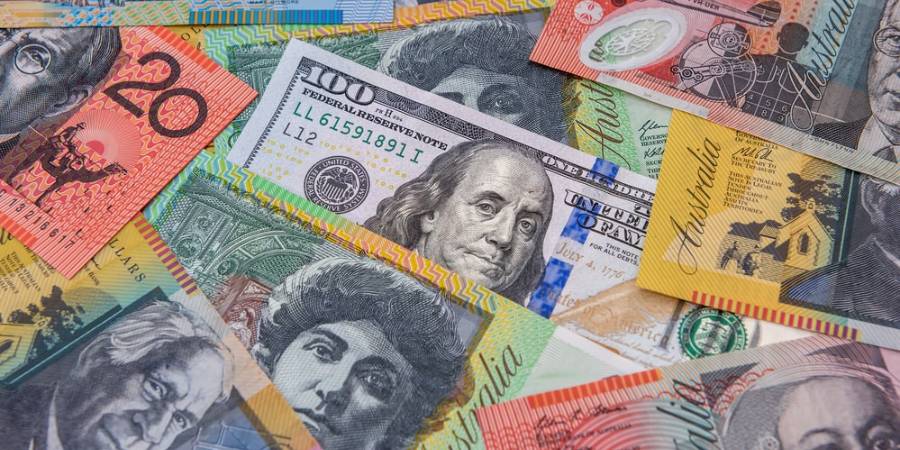Australian Dollar appreciates on growing hawkish sentiment surrounding RBA
- Markets in 2026: Will gold, Bitcoin, and the U.S. dollar make history again? — These are how leading institutions think
- US Q4 Earnings Season Set to Begin: Can US December CPI Data Bolster Rate Cut Case? [Weekly Preview]
- Gold Price Forectast: XAU/USD rises above $4,600 on US rate cut expectations, Fed uncertainty
- US Dollar Index steadies above 99.00 ahead of Retail Sales, PPI data
- WTI maintains position above $59.00 as supply risks grow
- Silver Price Forecast: XAG/USD corrects to near $86.50 as Iran stops killing protesters

■ The Australian Dollar gains ground as the stronger CPI enhances hawkish sentiment regarding the RBA monetary policy stance.
■ The Australian Dollar strengthens in response to the higher 10-year yield on Australian government bonds.
■ The gains in US Treasury yields could limit the losses of the US Dollar.
The Australian Dollar (AUD) edges higher for the fourth consecutive session on Thursday. The Australian Dollar (AUD) gained traction against the US Dollar (USD) following the release of robust Australian Consumer Price Index (CPI) figures on Wednesday. Additionally, the easing tensions in the Middle East have created a positive market sentiment, favoring risk-sensitive currencies like the AUD and consequently supporting the AUD/USD pair.
The Australian Dollar gains ground following the higher 10-year yield on Australian government bonds, which has surged above 4.49%, approaching five-month highs. This increase in yield is attributed to the growing expectations of a more hawkish stance from the Reserve Bank of Australia (RBA) regarding its interest rate trajectory.
The US Dollar Index (DXY), which gauges the US Dollar (USD) against six major currencies, downticks, possibly influenced by improved risk appetite. However, the modest gains in US Treasury yields could mitigate the losses of the Greenback.
The preliminary Gross Domestic Product Annualized (Q1) from the United States (US) is scheduled to be released on Thursday, with expectations of a slowdown in the growth rate. The GDP figures will provide insights into the strength of the US economy and may indicate the Federal Reserve (Fed)'s future actions. If the report reveals higher-than-expected figures, it could spark speculation that the Fed will postpone its rate cut cycle.
Daily Digest Market Movers: Australian Dollar appreciates after hotter CPI data
Luci Ellis, the chief economist at Westpac and former Assistant Governor (Economic) at the Reserve Bank of Australia, notes that inflation slightly exceeded expectations in the March quarter. Westpac anticipates that the Board will keep interest rates unchanged in May and has adjusted their forecasted date for the first rate cut from September to November this year.
Australia’s Consumer Price Index (CPI) rose by 1.0% QoQ in the first quarter of 2024, against the expected 0.8% and 0.6% prior. CPI (YoY) increased by 3.6% compared to the forecast of 3.4% for Q1 and 4.1% prior.
Australia’s Monthly Consumer Price Index (YoY) rose to 3.5% in March, against the market expectations and the previous reading of 3.4%.
The S&P Global US Composite PMI decreased in April, indicating only a modest expansion in the nation's private sector. This was the weakest expansion since December. Activity saw slower growth rates in both the manufacturing and service sectors, with expansions easing to three- and five-month lows, respectively.
In April 2024, the Judo Bank Australia Composite Output Index rose, marking the third consecutive month of expansion in the Australian private sector and the fastest pace since April 2022. Although the service sector primarily drove business activity growth, the rate of decline in manufacturing output slowed to its lowest level in eight months.
The China Securities Journal indicated on Tuesday that the People's Bank of China (PBoC) plans to reduce the Medium-term Lending Facility (MLF) rate in an effort to decrease funding costs. The next MLF rate setting is scheduled for May 15. This move might potentially benefit Australian exports to China, considering the strong trade ties between the two nations.
Technical Analysis: Australian Dollar hovers above the psychological level of 0.6500
The Australian Dollar trades around 0.6510 on Thursday. The pair is hovering above the lower boundary of a symmetrical triangle pattern. A further gain could lead to a bullish sentiment, with the pair potentially targeting the psychological level of 0.6600 and aiming for the upper boundary of the triangle near 0.6639. Additionally, the 14-day Relative Strength Index (RSI) is above the 50-level, supporting this bullish outlook.
On the downside, immediate support is expected around the psychological level of 0.6500. A break below this level may lead to further downside momentum, with the next significant support region around 0.6456. The AUD/USD pair may find further support at April’s low of 0.6362.
AUD/USD: Daily Chart
Read more
* The content presented above, whether from a third party or not, is considered as general advice only. This article should not be construed as containing investment advice, investment recommendations, an offer of or solicitation for any transactions in financial instruments.





